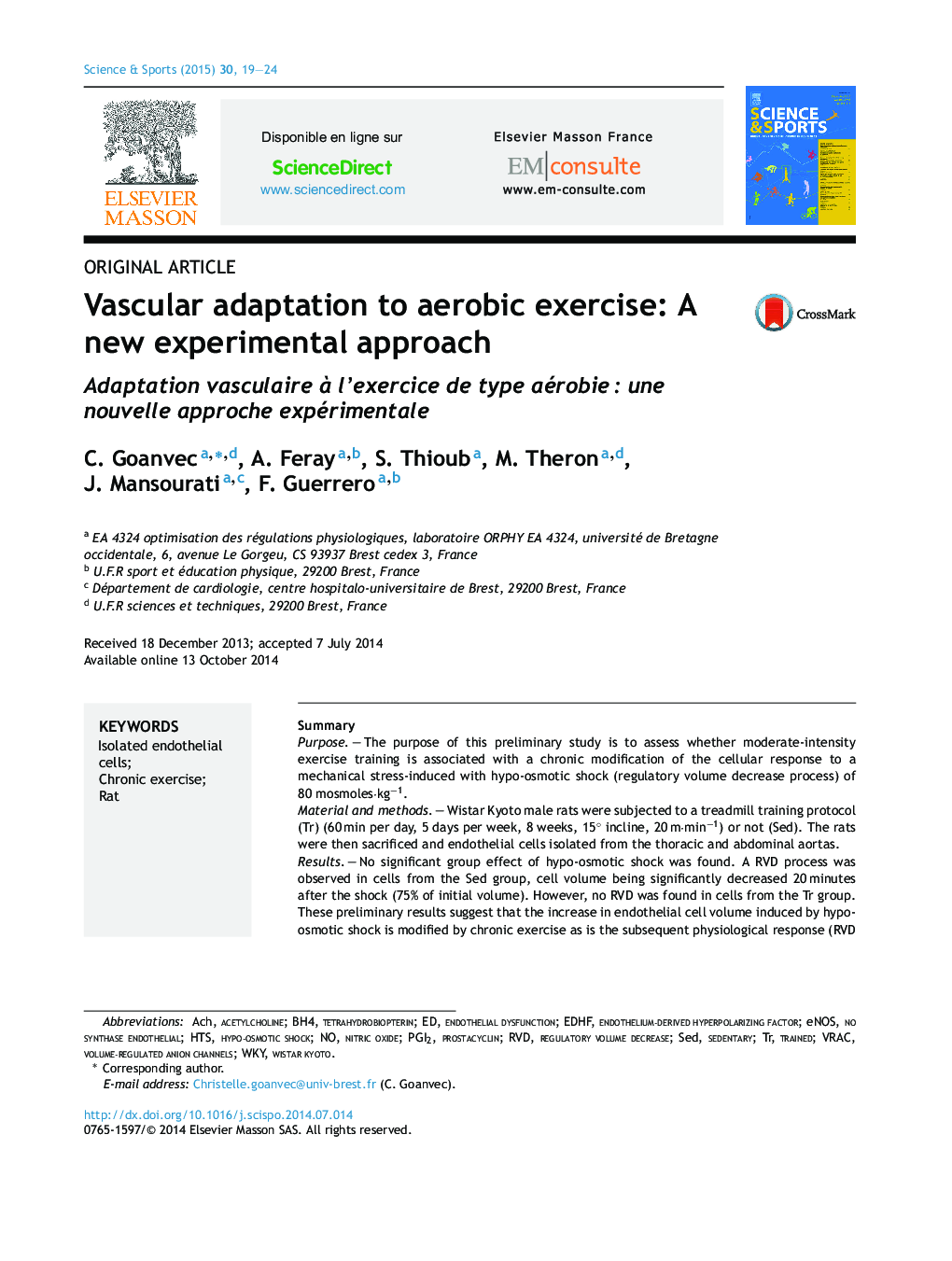| Article ID | Journal | Published Year | Pages | File Type |
|---|---|---|---|---|
| 4092680 | Science & Sports | 2015 | 6 Pages |
SummaryPurposeThe purpose of this preliminary study is to assess whether moderate-intensity exercise training is associated with a chronic modification of the cellular response to a mechanical stress-induced with hypo-osmotic shock (regulatory volume decrease process) of 80 mosmoles·kg−1.Material and methodsWistar Kyoto male rats were subjected to a treadmill training protocol (Tr) (60 min per day, 5 days per week, 8 weeks, 15° incline, 20 m·min−1) or not (Sed). The rats were then sacrificed and endothelial cells isolated from the thoracic and abdominal aortas.ResultsNo significant group effect of hypo-osmotic shock was found. A RVD process was observed in cells from the Sed group, cell volume being significantly decreased 20 minutes after the shock (75% of initial volume). However, no RVD was found in cells from the Tr group. These preliminary results suggest that the increase in endothelial cell volume induced by hypo-osmotic shock is modified by chronic exercise as is the subsequent physiological response (RVD process). Therefore, we conclude that isolated endothelial cells from trained rat arteries would provide a good model to assess the effects of chronic exercise on cellular signaling.
RésuméObjectifsCette étude préliminaire a pour objectif de montrer qu’un entraînement physique d’intensité modérée est associé à des modifications chroniques des réponses cellulaires induites par un choc hypo-osmotique de 80 mosmoles·kg−1.Matériels et méthodesDes rats males de souche Wistar Kyoto sont soumis à un protocole d’entraînement chronique sur tapis roulant (60 min par jour, 5 jours par semaine, pendant 8 semaines, pente de 15°, à 20 m·min−1) ou sont sédentaires. Les rats sont ensuite sacrifiés et les cellules endothéliales isolées à partir des aortes thoracique et abdominale.RésultatsLe choc hypo-osmotique induit une augmentation du volume cellulaire dont l’amplitude n’est pas modifiée par l’entraînement. Pour les animaux sédentaires, cette augmentation est immédiatement suivie d’un retour aux valeurs normales (regulatory volume decrease, RVD) qui devient statistiquement significative 20 minutes après l’initiation du choc (75 % du volume initial). Le RVD n’est pas observé pour les animaux entraînés. Ces résultats préliminaires suggèrent que l’augmentation de volume, ainsi que la réponse physiologique subséquente (processus de RVD), induites par un choc hypo-osmotique, sont modifiées par l’entraînement. En conséquence, les cellules endothéliales fraîchement isolées d’aortes de rats entraînés à l’exercice constitueraient un bon modèle d’étude des effets de l’exercice sur la signalisation intracellulaire.
